 Pettis County, Missouri, A Portrait & Biographical Record - Johnson and Pettis Counties , July
1895
Pettis County, Missouri, A Portrait & Biographical Record - Johnson and Pettis Counties , July
1895
"Hon. John H. Bothwell, B.S., LL.B., an able and leading attorney of
Sedalia, Mo., has done more for this place than almost any other man.
He is now serving as Vice President of the Sedalia National Bank and as
President of the Board of Trade. He was a member of both the
Thirty-fifth and Thirty-eighth General Assemblies of the Missouri
Legislature, serving with distinction in that body.
Mr. Bothwell was born in Maysville, Clay County, Ill. in November,
1848, and is a son of James K. Bothwell, a native of Athens County,
Ohio. The grandfather of our subject, whose name was also James
Bothwell, was born in the North of Ireland, of Scotch parentage, and
came with his parents to the New World when a child, they locating in
Virginia, where James was reared. He later went to Geneva, Pa., where
he was married, and removed to Athens County, Ohio, settling in the
portion which is now comprised in Vinton County. There he engaged in
agricultural pursuits, meeting with excellent success, and reared a
large family of children.
The father of our subject located in Clay County, Ill., over a
half-century ago, and there, in connection with farming, also dealt in
merchandise in Clay City. He married Marian Brissenden, who was born in
Edwards County, Ill., and is a daughter of John Brissenden. Her parents
came from England, and were pioneers of the Prairie State, where they
arrived in the early part of this century, and made a location in
Edwards County. Of the seven children born to Mr. and Mrs. Bothwell,
five grew to maturity, while four are still living: H.C., who is
County Treasurer of Clay County, Ill.; Hon. John H.; James, a resident
of Seattle, Wash.; and Florence, who resides on the old home. The
father is still living at the ripe old age of seventy-six years, and is
a stanch (sic) Republican in politics.
The primary education of John H. Bothwell was begun in an old log
schoolhouse with puncheon floor, after which he attended school in a
frame building in Maysville, and still later in one of brick in Clay
City. He remained at home until he had reached the age of seventeen,
when he entered the State University at Bloomington, Ind., completing
the scientific course in the Class of '69, when he received the degree
of B.S. He then traveled a few months, after which he began the study
of law in Edwards County, Ill., with A.B. Matthews; subsequently he
went to Springfield, Ill., studying with the firm of Stewart, Edwards &
Brown. Major Stewart was at one time preceptor and partner of Abraham
Lincoln, of whom he was ever a warm personal friend. Our subject later
went to Albany, N.Y., and graduated from the law school there in the
Class of '71, receiving the degree of LL. B., at which time he was also
admitted to the Bar, being licensed to practice in both the New York
and United States courts.
In the same year Mr. Bothwell located in Sedalia, where he opened a
law office, and after engaging in practice for one year, formed a
partnership with F. Houston, the firm being known as Houston &
Bothwell.
Copyright. All rights reserved.www.usgwarchives.net/copyright.htm ontributed by: <Narzette@comcast.net> Vesta L. DeRiso |
| John Homer "J. H. Bothwell, Sedalia, Missouri |
Daily Democrat, Sedalia, Missouri 9 Sept 1982
John H. Bothwell, Houston & Bothwell, Attorneys at Law
This connection continued for twelve years, when it was
dissolved by mutual consent, after which Mr. Bothwell joined his
brother-in-law, William V. Jaynes, and the firm became Bothwell &
Jaynes. This continued until his partner's death, in July, 1891, since
which time he practiced alone. He is connected with various business
interests, having served as Vice-President of the Sedalia National Bank
for two years, and is a very successful loan agent. He owns a farm of
three hundred acres ten miles west of Sedalia, besides much valuable
real estate in the city, including both business and residence
property, and has erected several brick blocks. He also laid put the
Bothwell & Weed addition to Sedalia, and organized the Midland Savings
& Loan Company, of which he was secretary and manager, but resigned on
account of not having sufficient time to devote to the duties of the
same.
In 1884, in this city, Mr. Bothwell married Miss Hattie E. Jaynes, the
eldest daughter of Col. A. D. Jaynes, who is now deceased. She was born
in Athens County, Ohio, and was educated in the Wesleyan Female
Seminary of that state. She was called to her final rest in 1887.
In politics, Mr. Bothwell takes a prominent part, and was elected in
1888, on the Republican ticket, to the Thirty-fifth General Assembly,
representing the eastern half of the county, which was then divided
into two districts. He served on the Judiciary Committee, as well as
the one on penitentiaries, and during the term introduced several
important bills. At the close of that session he was appointed on the
committee which revised, compiled, annotated and published the revised
statutes of Missouri in 1889. In 1892, while on a two-months trip of
Europe, he was made Chairman of the Republican State Central Committee,
serving from April, 1892, until August, 1894, when his successor was
elected. In 1894 he was elected to represent Pettis County in the
Legislature, receiving a majority of four hundred over his opponent,
and he was a candidate in the Republican caucus for Speaker of the
House.
Mr. Bothwell introduced the resolution which was passed to remove the
capital to Sedalia, which had frequently been attempted during the
preceding eighteen years. It was a master stroke on his part. After he
had secured its passage through the House, Senator Yeater, also of
Sedalia, managed and supported it in the Senate. He served on a number
of important committees, including the Judiciary, which was the leading
committee of the House; the one on Criminal Fees and Costs; the one on
the permanent Seat of Government, and on Rules.
Besides his many other business interests, Mr. Bothwell is now serving
as President of the Sedalia Board of Trade. He has not only visited
Europe, but has traveled very extensively in his own country, having
visited three-fourths of the states of the Union, going from the
Atlantic to the Pacific, and from the Lakes to the Gulf. He is one of
the most brilliant attorneys of Sedalia, and ranks high among his
professional brethren in the state. He has met with excellent success
in almost everything he undertakes , and as a public man has a record
of which he may well be proud.Hattie E. Jaynes, Bothwell. Sedalia, Missouri
 |
| Georgetown Missouri Courthouse, Pettis County |
 |
| Sedalia, MO 1912 Ohio Street |
 |
| Weathers' Kort Apartments, Sedalia, MO |
 |
| Ohio St, Sedalia Mo 1910 |
 |
| Carnegie Library, Sedalia, MO 1905 |
 |
| Old Sedalia, MO Broadway East from Kentuck |
 |
| M.K.&T. Hospital, Sedalia, MO |
 |
| The Floral Station, Sedalia, Mo |
 |
| Missouri State Fair Graviton Ride Fails 1991 |
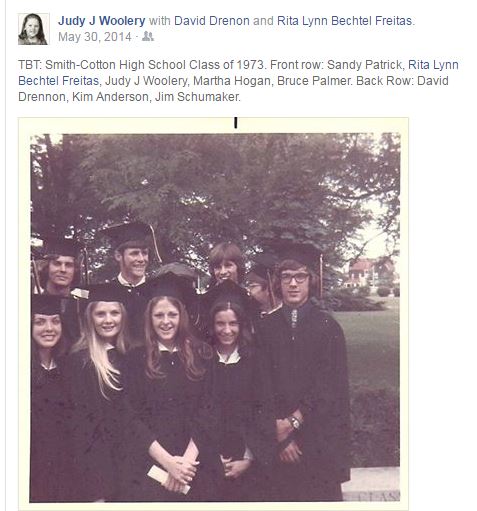 |
| Kim Anderson, back row, Coach at Mizzou |
 |
| Shaw Music Sedalia, MO |
 |
| Sedalia, Missouri Co-operative Currency |
 |
| Sedalia Army Air Field Vehicle Tag 1940's |
 |
| Sedalia, MO Bargain House |
 |
| 1921 Sedalia, MO Post office delivery |
 |
| Al Smith, Visits, Sedalia, MO |
 |
| Add caption |
Dorothy Dwan

Dorothy Dwan (April 26, 1906 – March 17, 1981) was an American film actress. She appeared in 40 films between 1922 and 1930, several of which were directed by her second husband, Larry Semon. Born Dorothy Ilgenfritz in Sedalia, Missouri, she married three times. She had one child, a son, Paul, by her marriage to Paul Northcutt Boggs Jr. Dwan died in Ventura, California from lung cancer, aged 74.
Selected filmography
Her Boy Friend (1924)
Kid Speed (1924)
Wizard of Oz (1925)
The Perfect Clown (1925)
Stop, Look and Listen (1926)
Hills of Kentucky (1927)
Tumbling River (1927)
Riders of the Dark (1928)
The Peacock Fan (1929)
The Fighting Legion (1930)
External links
Dorothy Dwan at Virtual History
 |
| Sedaliak Chautauqua, William Jennings Bryan Day, July 1902, Sedalia, MO |
 | ||||||||
| LAMY Manufacturing Co, Sedalia, MO |
 | |||||||||||
LAMY Manufacturing Co, Sedalia, MO  |
 | ||||||||
| LAMY Manufacturing Co, Sedalia, MO |
 |
| Pettis County Court House Fire, Sedalia Missouri 1920 |
 |
| BARD Drugs |
First United Methodist, Sedalia Missouri Postcard
 |
| The Shawnee Trail Cattle Trail to Sedalia, Missouri |
 |
| Kindred Motor, Co. Nash Auto Sales, Sedalia, MO |
 |
| September 1911, President Taft Will Open The Missouri State Fair - Sedalia, MO |
 |
| President Taft Visits Sedalia |
 |
| Shoemaker's, Sedalia, MO |
 |
| Hotel Terry, Sedalia, Missouri |
 |
| Cecil's Bicycle Shop, Sedalia, MO |
.JPG) |
SEDALIA MISSOURI HOTEL BOTHWELL BARBERSHOP
1917 Missouri State Fair, Sedalia, MO
Spencer Pettis, death, Pettis County Missouri Namesake Killed 1831
|
.JPG) |
| Big Car Racing, Missouri State Fair, Sedalia 1958 |
.JPG) |
| SEDALIA MISSOURI DOWNTOWN OSAGE STREET BUILDING |
.JPG) |
| 1956 Missouri State Fair, Sedalia |
|
Northern Methodist Church, Sedalia, MO  Sedalia, MO Dog Tag 1942  |
| History of Pettis County, Sedalia 1882 New York Public Library Collection Book Download Link |

 |
| 1870 - Fraud Charge - How State Normal of Warrensburg was Secured |
.JPG) |
| Sedalia, MO |
.JPG) |
| Sedalia, MO |
.JPG) |
| Sedalia, MO |
.JPG) |
| Ohio Street Looking South Sedalia, MO |
.JPG) |
| First Dwelling Sedalia, MO |
.JPG) |
| Hotel Bothwell and Guest Room, Sedalia, MO |
.JPG) |
| PETTIS COUNTY SHERIFF WM. BOLTON |
.JPG) |
| SEDALIA & HUGHESVILLE MISSOURI HORSE DRAWN CARRIAGE Maywood Hospital, Sedalia, MO 1907 |
.JPG) |
| Welcome Sign in Sedalia in about 36 languages |
.JPG) |
| Will J Crawford Soda Bottles |
.JPG) |
MoPac Depot, Sedalia, Mo |
.JPG) |
| Sedalia Army Airfield, Missouri - Canteen C-46 Sedalia Army Air Field, MO |
.jpg) |
| Sedalia Army Airfield, Missouri |
.jpg) |
Sedalia Army Airfield, Missouri Lt. George Whiteman, Sedalia, MO Whiteman Air Force Base, WAFB, Missouri Lt. Whiteman Link |
 |
| 1903 Sporting Life Team Composite Card of the Sedalia Team of the Missouri Valley League May 8, 1922 Ralph G. Bray, Sedalia Baseball Club |
 |
| DR FA WOOD'S SARSAPARILLA SEDALIA MISSOURI MEDICINE |
 |
| DR FA WOOD'S SARSAPARILLA SEDALIA MISSOURI MEDICINE |
 |
| SEDALIA Missouri/MO W30MA QSL Ham Radio Orson Matson |
.JPG) |
1949 Press Photo Car Crash Wreckage After Collision w Train, Sedalia Missouri
|
 |
| A O Monsees |
.JPG) |
| Bird's Eye View, Sedalia, MO ca. 1890 |
.JPG) |
| Ohio Street, Sedalia, MO c. 1890 Link Postcards of Sedalia |
 |
| Add caption |
.JPG) |
| Missouri State Fair, Sedalia, MO ca. 1890 |
.JPG) |
| Add caption |
 |
| West Broadway Residences, Sedalia, MO ca. 1910 |
KhBOuVpcczW!~~60_57.JPG) |
| Missouri Pacific Depot, Sedalia, MO |
 |
| Sedalia residents gathered along the streets to watch as the Pettis County Courthouse burned on June 16, 1920 Link, Pettis County Courthouse History |
 |
| Latour Photographer, Sedalia, MO |
 |
| Bothwell Hotel, Sedalia, Missouri ca.1935 |
|
Covered Bridge, Sedallia, MO
 |
| West on Broadway, Sedalia, MO ca. 1890 Dirt Road |
 |
| Sedalia Postcard |
 |
| Odd Fellow Building, Sedalia, MO |
BPkEs5KY6Q~~60_57.JPG) |
| Covered Bridge, Sedalia, MO |
 |
| Add caption |
 |
| Sedalia, Mo Business College May 1914 |
 |
| Ohio Street looking South, Sedalia, MO ca 1890 |
 |
| George R. Smith College, Sedalia, MO Scott Joplin Studied Here
Scott Joplin's alma mater, George R. Smith College, a historically black college (HBCU), operated from 1894 until it burned down on April 26, 1925.
The land for the college had been donated by the Smith sisters Sarah and Martha Elizabeth. They also donated land for Dunbar Park. Sarah Smith-Cotton's family home was torn down and the land was then used for the building of Smith-Cotton High School.
|
 |
| Miss Dorothy Wells, Held Up a Drug store for Honeymoon Money. Sedalia, MO 1933 |
 |
| Add caption |
 |
| Mrs. F. B. Nelson, Sedalia, MO 1926 First Female Park Ranger at Yellowstone National Park |
 |
| Dry Parade, Carrie Nation, Sedalia, Missouri Temperance Movement |
The Most Russian City in the U.S.
Published 06/3/2006
15 percent of population in Missouri’s Sedalia came from former USSR countries
At the entrance to Sedalia, located some 50 miles away from Missouri’s capital at Jefferson City, the roadway sign reads: “City Limits 20 360.” The number reflects the total population of the small provincial town in the very heart of theUnited States. Sedalia takes great pride for hosting the annual Missouri State Fair, which will have its 104th anniversary this year. Another hallmark of Sedaliathat makes the town a truly unique place is its Russian population. Over three thousand people in Sedalia came there from Russia and the former republics of the Soviet Union. Uncomplicated calculations show that more than 15 percent of the town’s people are Russians.
There is no similar city in the U.S. today. What is even more interesting is that the Russians [the term is used collectively, of course] are continuing to arrive there almost daily. The Russians are coming from Oregon, Washington,California, Michigan, Minnesota, and Ohio…
Going to milk the cows?
The passions of Russian people from the aforementioned states for moving is clearly noticeable in the offices of realtors Olga Kapitula and Olga Ostapenko, who work for the Missouri Land Brokers agency. The clients are first greeted by a welcoming sign in Russian “Dobro pozhalovat”. People fill the office regularly and the telephones ring all the time.
Olga Kapitula is among the pioneering Russian settlers in Sedalia. She came here seven years ago from Seattle, Washington.
- My husband initially went to Sedalia to see how the first two Russian families liked it. When he came home, he told me that he bought 40 acres of land inMissouri. People looked at us with laughter: “Will you be milking cows there?” These discouragements did not frighten us and my husband came here to build a house. As soon as we settled, guest visits from Washington became frequent. Everybody wanted to see how we were doing and to check land and real estate prices in Sedalia. I became a realtor because I used to take people around in my car to look at the houses. The mortgage broker himself offered me to go through training and take the license exam. Although my academic background is medicine, I do not regret at all the change in profession. I am still doing the same job: I’m helping people.
What is it that attracts people to Sedalia? Nikolai Prokopchyuck, a senior man, moved to Missouri from Sacramento about two years ago.
- Life in California is very expensive. Circumstances forced us to search for something easier and more tranquil. It is like a Ukrainian farming village here. I am very much satisfied and have do not lament my move to Missouri
The prices on land and houses around Sedalia, several times smaller than those in many other states and cities, account for much of the attraction force. There are good opportunities for investment. Many people buy land in Sedalia for contingency uses, without any explicit and immediate designs. These people may either move to Missouri in the future or sell the land with good profits. According to Olga Kapitula, land prices over the past seven years have risen by 50-70 percent.
Families with small children make the decision of relocating to Sedalia to ensure the well-being of the young generation.
“Schools here are much better than in the big cities,” Olga told me. “It is an ideal place for raising children – far away from all the temptations offered by large cities.”
“Helping the children” seemed to be a constant theme in the discussions I had with many Russian residents of Sedalia. To many, an important reason for moving to Sedalia is the size of its religious community. There are in total four Russian churches in the town.
There are absolutely no signs that Olga Kapitula and her colleagues will be less busy in the foreseeable future.
The Russian spirit lives here
The above assertion can freely be applied to the Russian store in Sedalia. It is located in the very center of the downtown area and carries a name of Izmail. The store’s co-owners are two sisters Alyona and Lilia. The Russians of Sedalia come here to buy what is dear to their hearts: herring fish and kielbasa, lard and cheese, candies and caviar… The list can go on forever. For reasons unknown, Russians seldom buy bread at the store. Home-made loafs, produced by Russian housewives, are earmarked for American consumers. Inside the Russian store, it is also possible to drink a cup of real Italian coffee with a freshly-made nutritious sandwich.
The store’s operator, Alyona, recently returned from a trip to her native Ukraine and was glad to be home. She missed Missouri a great deal. In their tern, Alyona’s American clients missed her. Many Americans came to visit her and even offered flowers.
Elderly man Don Braden, a frequent visitor of Izmail, comes to the Russian cafe to relax.
- Not only is everything here fresh and delicious, it is also very pleasant to talk to Alyona and Lilia. They are always welcoming. They have a good sense of humor. They can create such an unforgettable atmosphere that makes people want to return to their store again and again. Other American visitors of Izmail, Ted Halling and Sandy Barton completely agree with Don.
Several days prior to my visit to Sedalia, one more Russian store opened inSedalia. Valentina Danilova started Sunrise Market. One can find here Russian souvenirs, books, and even video rentals.
“American friends asked me about Russian souvenirs so often that I decided to open my own store,” explained Valentina.
Look for the Russian mafia in New York.
Alla Borovitskaya came to Sedalia from Belgorod only a year ago. A fashion designer with 18 years of experience, she did not immediately set out to open her own business. She looked around, practiced the new language, and finally dared to venture into commerce.
- People got to know that I sew well and started asking for my help. I called my friends in other cities who have opened such businesses and asked for advice. “Don’t be afraid, start a company. There will be more work than you can handle. If you’d like, just come and live with us.”
Alla did not go anywhere from Sedalia. She successfully organized her business in the small Missouri town.
Some of the Russians are buying out large buildings in Sedalia in hopes of starting mass production of various goods. Others are involved in the construction business. Some sell cars, repair them, or use them in a freight-delivery business.
Certainly, not all the Russians in Sedalia are entrepreneurs. Many work for food processing companies. At a local Wal-Mart, I met a Russian cashier. Julia from Ukraine served me tea at a roadside McDonald’s.
The vast majority of American businesses have already come to realize that the Russian market is very beneficial for them. Some are surprised to learn that the population of Russians in the town has reached such large proportions and believe that it would be good to attract that category of clients.
“I am happy that there is such a big Russian community in Sedalia,” said Assistant President of Excel Bank Dana Palmer. “They are really hard-working people, excellent neighbors, and good clients. Our bank extensively works with the Russian community and will do anything possible to increase the number of Russian clients.”
In the Police Department of Sedalia, I was reassured that no Russian crime takes place in the city. The town in general is famous for its respect for law and order.
“You should look for Russian mafia somewhere in New York, not in Sedalia,” the officer smiled.
This is the way Sedalia is – the largest Russian city of America. It is very close to big metropolis areas of Kansas City, St. Louis and Columbia. Come and visit!
Archias Seed Store - Sedalia MO
L. H. Archias established the Archias Seed Store in 1884 and expanded to the floral business in 1910. Active in the Sedalia community, Archias helped found the Florists Telegraph Delivery Association (FTD) and the Missouri State Florists Association. The Archias Seed Store remained a Sedalia landmark until closing in the mid-1990s. (with info From Legendary Locals of Sedalia, by Rebecca Carr Imhauser).
 |
| Archias' Seed Store, Sedalia, MO |
MISSOURI STATE FAIR AT SEDALIA
OCTOBER 1 THROUGH 7, 1910
By the fall of 1910, the Wright Fliers were seasoned exhibition pilots, some with over twenty hours of flight time. Wright aircraft design was still in transition, and the pilots were testing new features in the field. The Wright brothers added wheels to the landing skids and disposed of the launching rail. They also made the rear elevator a permanent fixture, but had not yet completely disposed of the canard.
These photos show a previously unknown Wright aircraft that seems to have been adapted from an older Model A so that it can be flown with or without a canard. Over the space of several days while the Wright Fliers are flying at the Missouri State Fair, the airplane is photographed in the air in both configurations. Note the canard braces that jut forward at an angle from the skids. Even when this airplane is put together without a forward elevator the braces remain, sticking out in front. The semicircular "blinkers" that were once mounted between the canard surfaces are now attached to the skid braces. In later Wright aircraft, these will become triangular in shape.
Although we can’t know for sure, the most likely reason that this airplane was flown in different configurations is that it was an experimental aircraft. The Wrights were undecided as to the best aeronautical design, so they had a pilot fly the same airplane with and without a canard and report the results. The designated test pilot was Archibald Hoxsey, one of the most trusted of the Wright Fliers. From the state fair, Hoxsey took the aircraft to an air meet in St. Louis where he flew President Theodore Roosevelt on October 11, 1910 -- the airplane had no canard for this flight. Hoxsey apparently reported that he preferred the aircraft without the canard. When we next see this distinctive airplane, Hoxsey is racing it at Belmont, New York between October 22 and 31. The canard is gone, never to reappear, but the braces remain.
These test flights led to the development of the Wrights’ most popular design, the Wright Model B, which the Wright brothers introduced in Belmont. This was the aircraft which first introduced much of America to the wonders of flight. http://www.wright-brothers.org/…/Lost_Flig…/Lost_Flights.htm
Wright Brothers Aeroplane Comes to the Missouris State Fair in Sedalia, MO October 1910.
OCTOBER 1 THROUGH 7, 1910
By the fall of 1910, the Wright Fliers were seasoned exhibition pilots, some with over twenty hours of flight time. Wright aircraft design was still in transition, and the pilots were testing new features in the field. The Wright brothers added wheels to the landing skids and disposed of the launching rail. They also made the rear elevator a permanent fixture, but had not yet completely disposed of the canard.
These photos show a previously unknown Wright aircraft that seems to have been adapted from an older Model A so that it can be flown with or without a canard. Over the space of several days while the Wright Fliers are flying at the Missouri State Fair, the airplane is photographed in the air in both configurations. Note the canard braces that jut forward at an angle from the skids. Even when this airplane is put together without a forward elevator the braces remain, sticking out in front. The semicircular "blinkers" that were once mounted between the canard surfaces are now attached to the skid braces. In later Wright aircraft, these will become triangular in shape.
Although we can’t know for sure, the most likely reason that this airplane was flown in different configurations is that it was an experimental aircraft. The Wrights were undecided as to the best aeronautical design, so they had a pilot fly the same airplane with and without a canard and report the results. The designated test pilot was Archibald Hoxsey, one of the most trusted of the Wright Fliers. From the state fair, Hoxsey took the aircraft to an air meet in St. Louis where he flew President Theodore Roosevelt on October 11, 1910 -- the airplane had no canard for this flight. Hoxsey apparently reported that he preferred the aircraft without the canard. When we next see this distinctive airplane, Hoxsey is racing it at Belmont, New York between October 22 and 31. The canard is gone, never to reappear, but the braces remain.
These test flights led to the development of the Wrights’ most popular design, the Wright Model B, which the Wright brothers introduced in Belmont. This was the aircraft which first introduced much of America to the wonders of flight. http://www.wright-brothers.org/…/Lost_Flig…/Lost_Flights.htm
Wright Brothers Aeroplane Comes to the Missouris State Fair in Sedalia, MO October 1910.


































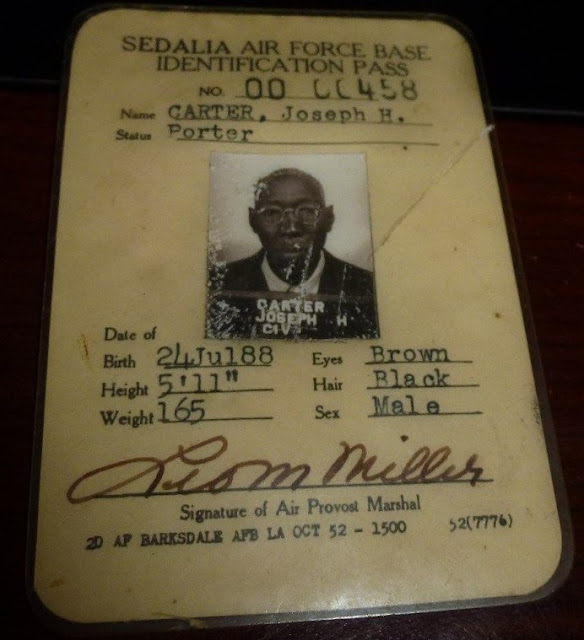










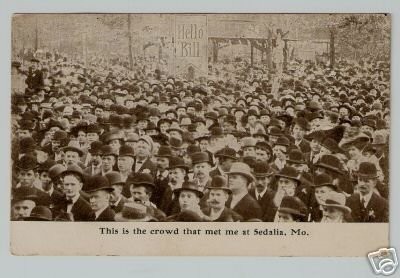















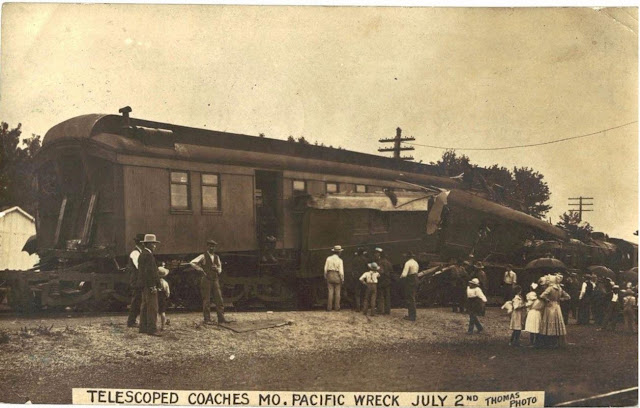































































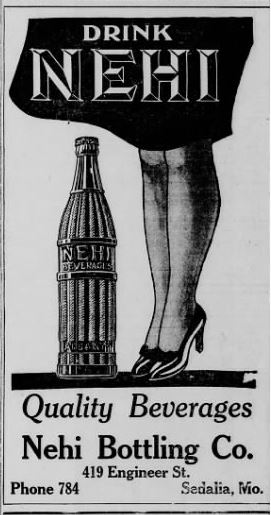


































































.JPG)
.JPG)
.JPG)
.JPG)
.JPG)
.JPG)






.JPG)
.JPG)
.JPG)
.JPG)
.JPG)
.JPG)









.png)
.png)
.png)
.png)

.JPG)
.png)
.png)




.JPG)
.JPG)
.JPG)
.JPG)








.JPG)
.JPG)
.JPG)
.JPG)








.JPG)





.JPG)
.JPG)
.JPG)

.JPG)













.JPG)
.jpg)
.JPG)



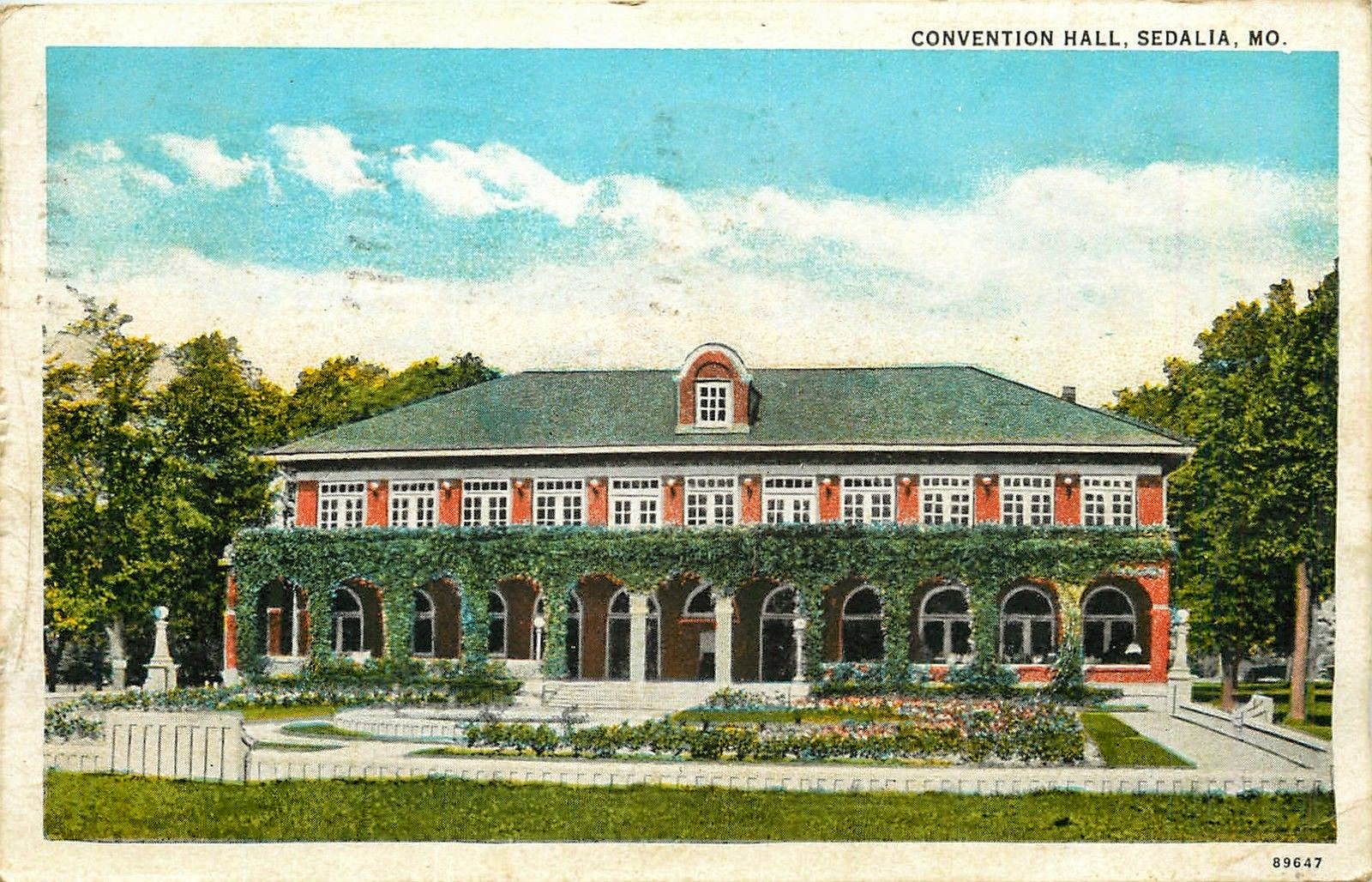




U3by(BMveU9hv3w~~_1.JPG)







drQ~~60_57.JPG)




.JPG)

Zfp9BPmH,ddZfQ~~60_57.JPG)











BOjy-NjjFg~~60_57.JPG)




)Q~~60_57.JPG)


BUBPmHmeG1t!~~60_57.JPG)




R4pT)!!~~60_57.JPG)







.JPG)
.JPG)
.JPG)
.JPG)
.JPG)
.JPG)
.JPG)
.JPG)
.JPG)
.JPG)
.JPG)
.JPG)
.JPG)
.JPG)
.JPG)
.JPG)
.JPG)






.JPG)
.JPG)
.JPG)
.JPG)
.JPG)
.JPG)
.JPG)
.JPG)

.JPG)
.JPG)
.JPG)
EE9s2uiPpvBRhubIYDfg~~60_57.JPG)
ZQ~~60_57.JPG)
vChJfBScVoL1kE!~~60_57.JPG)


g1BR,C-9jmUg~~60_57.JPG)

0E9s37E29dBR)mW9RrMQ~~60_57.JPG)









UE9s3wCLukBR+vK1qU,g~~60_57.JPG)


HrtwRE!~~60_57.JPG)


































